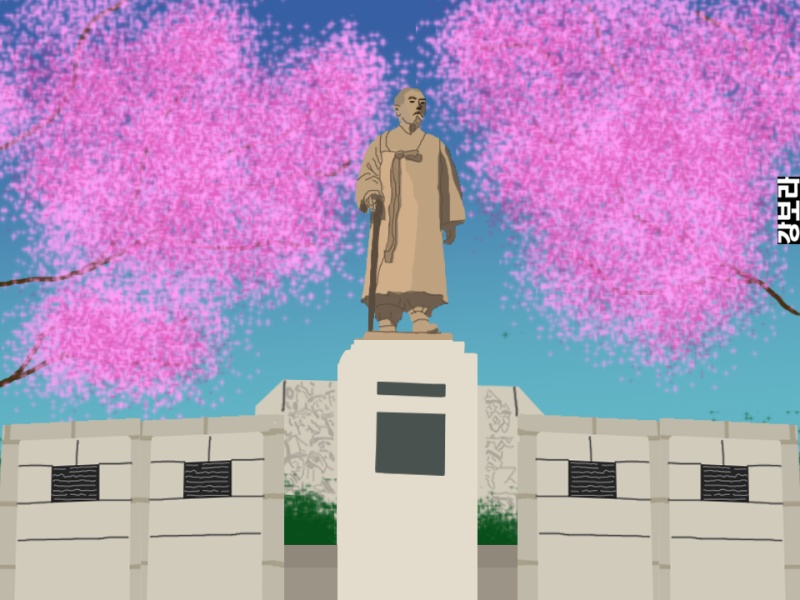- 한국어
- English
- 日本語
- 中文
- العربية
- Español
- Français
- Deutsch
- Pусский
- Tiếng Việt
- Indonesian
By Honorary Reporter Adriana Castilblanco from Mexico
Illustration = Adriana Castilblanco

Jongmyo Shrine in Seoul has a statue of a man dressed in Hanbok perched on top of a pillar. He was Yi Sang-jae, an important figure in modern Korean history.
Life and achievements
He was born in 1850 as Yi Gye-ho (he would later change his name to Sang-jae and earned the nickname Wol-nam) to a family spanning several generations of scholars. He spent his early years studying Chinese, but a chance encounter with Park Jeong-yang, his eventual mentor, launched his career as an enlightened activist.
Yi became Park's personal secretary in 1880, allowing him to learn about the world and domestic and international affairs. Yi joined the Enlightenment (Gaehwa) Party and participated in the unsuccessful Gapsin Coup of 1884.
Park was later appointed ambassador to the U.S., and Yi served as second secretary of the United States Legacy in Washington for a year. At the same time, Yi was in charge of abolishing relations with Qing China since the latter was interfering with diplomatic relations between the Joseon Dynasty and the U.S.
In later years, Yi got involved in domestic politics as education and law minister. In July 1896, he organized an independent civil rights association with figures who included Rhee Syngman, who went on to become the first president of the Republic of Korea. Yi also served as president and host of the Manmin Community, a large "enlightenment" group.
Yi also led an independence association and was considered one of its "three pillars." He proclaimed universal suffrage and proposed to Emperor Gojong Article 6 on government restrictions on the sovereignty of the absolute monarchy. The emperor first accepted this but the association was later ordered disbanded and 16 members including Yi were imprisoned.
After his release from prison, Yi dedicated himself to strengthening ties with Americans in politics such as Elise Roosevelt, daughter of then U.S. President Theodore Roosevelt, as well as joining anti-imperialist groups.
Yi also joined the Young Men's Christian Association (YMCA), and along with fellow prisoners, he sought to educate and enlighten young people. He defended the association, participated in an enlightenment campaign and even played an important role in the March 1 independence movement of 1919. He was accused of complicity in the latter incident and detained for six months.
In 1922, he founded and led a domestic education association that established private universities in the country. This initiative, however, was eventually squashed by the Japanese colonial government.
In 1925, Yi became president of Singanhoe, a group of independent activists. During this time, he began to suffer from peripheral nerve edema and on March 19, 1927, he fell into a coma. Though he eventually woke up, he died ten days later in Seoul at age 78.
Legacy
A songdeokbi (commemorative monument for virtuous public service) was erected in his hometown, and "The Yi Sang-jae Schematic Exhibition" was held in 1956 under orders from President Rhee.
Yi's legacy has lived on through the names of awards and song lyrics, but most prominent among tributes to him are the statue of him at the shrine and his tombstone at the Independence Hall of Korea in Cheonan, Chungcheongnam-do Province.
enny0611@korea.kr
*This article is written by a Korea.net Honorary Reporter. Our group of Honorary Reporters are from all around the world, and they share with Korea.net their love and passion for all things Korean.